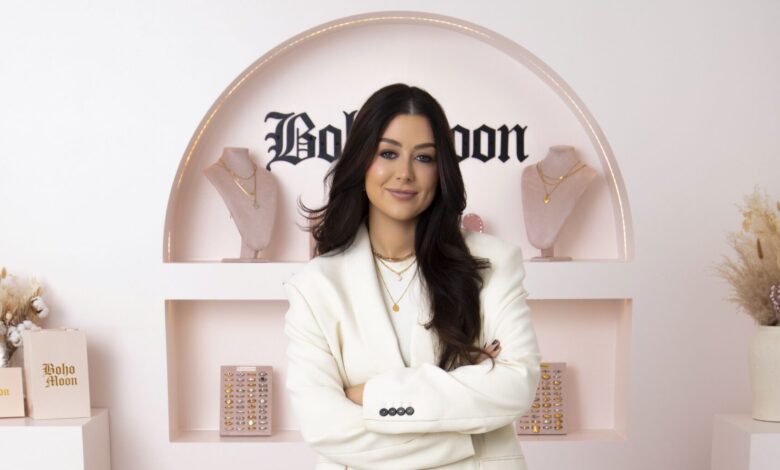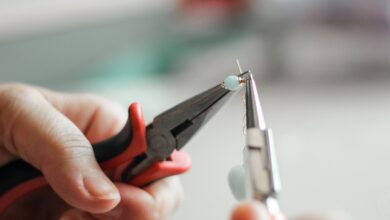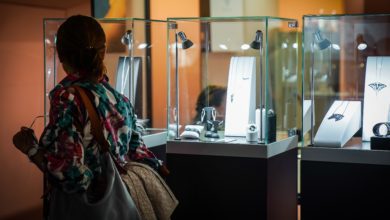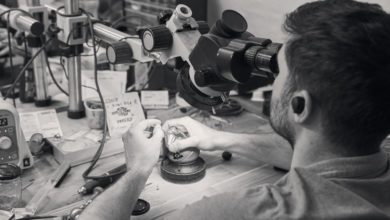From a uni room to the world: The story of Bohomoon
Jewellery Focus talks to Katie Lynch, founder of Bohomoon, about how she started the business, how she used social media to grow, and where she wants to take the brand next.

Bohomoon is a British stainless steel jewellery brand founded in 2014 by Katie Lynch when she was a university student studying at Kingston in London. The lack of choice on the high street led her to think outside the box and buy a box of 50 moon charms online to create her own jewellery. She didn’t know it yet, but this would be the moment that her business began, using social media to spread the word and get the venture off the ground. So, how did Bohomoon become as successful as it is today?
While the intention was never to start a business, Lynch realised fairly quickly that there was an opportunity when she made £30,000 in a month while still packing orders herself at university. With some help from her parents, she was able to complete her degree while beginning to turn Bohomoon into a bona fide brand.
“It got to the point where I was trying to pack the orders outside of lecture times, and I remember ringing my mum and dad and saying, ‘I’m quitting uni, I can’t do all of this.’ I had a dissertation to do, and I had hundreds of orders to pack. I couldn’t do it.
“My dad came and picked it all up and took it home and said, ‘Your mum will pack it in our spare room,’ which took all that burden off me, allowing me to finish uni and focus on the product—buying more and making it more into a brand, yeah,” Lynch says.
“Because my time wasn’t spent just packing orders, it gave me time to focus on the product. I think doing that really helped it grow. I was just putting every penny I made back into the business because I really enjoyed it and wanted to expand our offering.”
Leveraging social media
In some respects, Lynch says she entered the industry at the perfect time. She was able to run a fairly rudimentary business while using social media to spread the word about Bohomoon. In the mid-2010s, social media was not as developed as it is today, so the elements that made up a good post for a business were far less costly than they are now.
“It was the best time to be on Instagram [for a jewellery brand]. I literally just had an Instagram profile and a website, and that was it. Whatever I posted that day would be the top seller of the day.
“When I was doing it, Instagram didn’t need a perfect picture. I literally just took a quick photo and posted it. Often, I didn’t even have perfect nails, whereas now I feel like you have to tick a lot of boxes to even compete,” Lynch explains.
Scaling up
Once Lynch realised that there was a market for her product, it was time to scale up. One of the biggest challenges that founders face is handing over portions of the business they have built to other people when they no longer have the ability to be across everything. For Lynch, this was one of the hardest things to do.
“I want to have oversight on everything. I want to see how the orders are impacting the warehouse. I want to see the social media posts going out. I want to see what the email replies are.
“But since becoming a mum, I’ve hired some senior management—like a head of marketing, head of operations and head of finance—which have all really helped take a lot off my plate so I could focus on what I want to do in the business, which is the product,” she says.
Lynch states that she was able to successfully navigate this challenge by picking the right people, but also by knowing where she wanted to focus her time and what gaps this would leave. Having started out as a one-person operation, Lynch was also able to help new recruits fit into the business and her vision as, in her words, she had done all their jobs before.
“It’s hard, but I think because I’m in the office every day, I’m with everyone. I’ve done everyone’s job, so it’s easy for me to tell them how I want it and teach them, because I’ve done it.”
What does the future hold?
Today, Bohomoon has offices in Telford that sit above its warehouse. Between 2020 and 2024, the company saw a 401% increase in orders and 108% growth in 2024. The company also handles its third-party logistics (3PL) in-house, giving it another string to its bow compared to some of its competitors. Looking ahead, Lynch hopes that the company’s successful expansion in the UK will allow it to enter the US and rebuild the market it had in Europe before Brexit measures took hold.
She also wants to constantly improve the product and continue to give customers pieces they want to wear.
“We want to continue with our new product drops because our USP is that we have a lot of new drops. Our customers come back time and time again, and we always want to have the latest trends and something new for them to buy.
“We want to really focus on product and then just expand so we’re more known all over the world,” she concludes.













